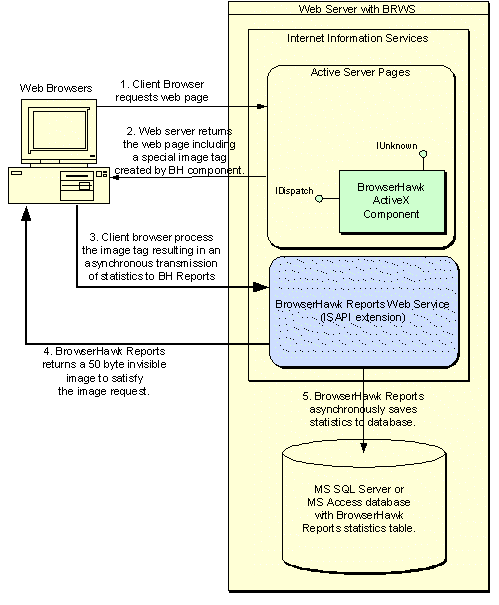
The BRWS runs as an Internet Information Services (IIS) ISAPI extension for Windows/IIS usrs. You install it on a web server running IIS, or on multiple servers as necessary to support your performance needs.
The BRWS4J runs as a servlet for developers typically using Java based solutions such as JSP. You install it by following the steps outlined in the brws4j.txt file distributed with BrowserHawk4J.
To log statistics to your database for a given user, you simply call the LogData method of the BrowserHawk component from a web script accessed by a site visitor. The LogData method extracts the statistics for the properties that you configured BrowserHawk to collect, and inserts an invisible image tag that contains these statistics into your HTML output.
When the browser receives the output from your web script, this tag results in an asynchronous transmission of these statistics from the browser to the BRWS, as the browser retrieves this invisible image. The BRWS instantly returns the transparent 50-byte image to satisfy the browser’s request for an image while it records the statistics into the database in the background.
The Figure below depicts the steps in this process. Although not pictured here, steps 3 - 5 may be performed by a BRWS running on a server other than the web server which handles steps 1 and 2. This is typically the case when running multiple production web servers with one BRWS handling all servers. See the section on Deployment for more information.

See Also: